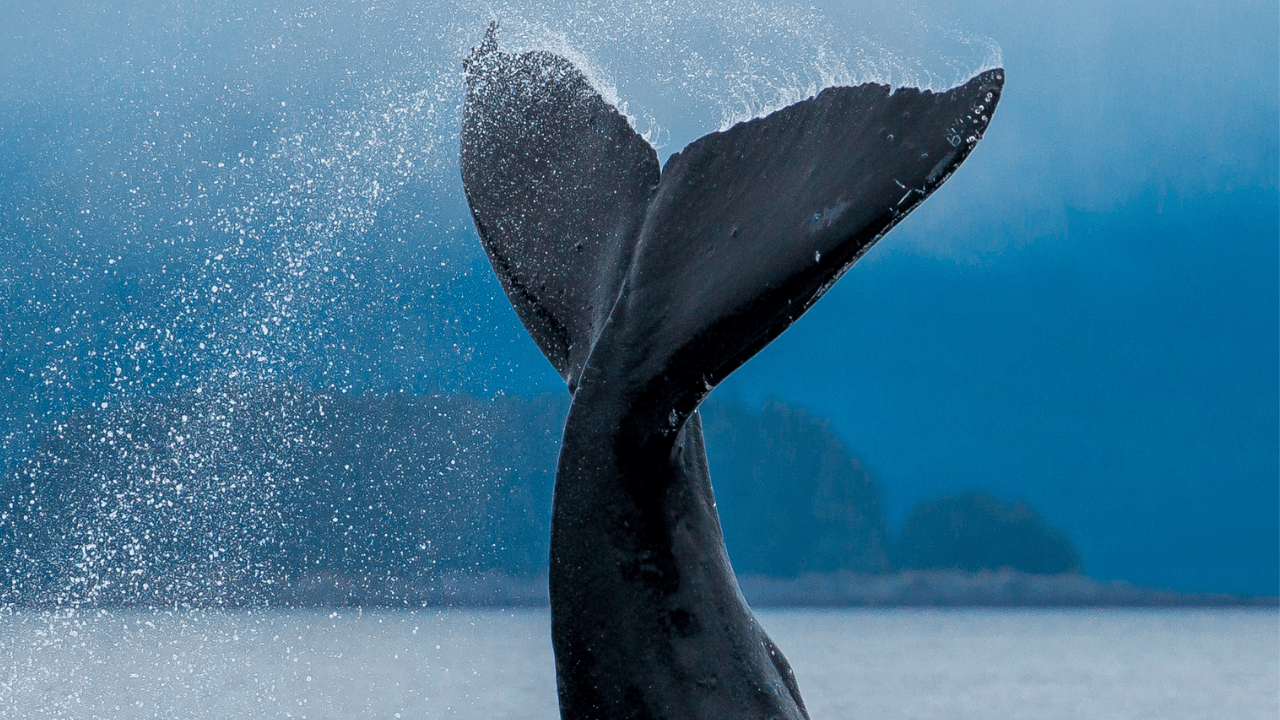
Snow’s Bones
The waters of Glacier Bay National Park practically boil with life in the summer: Sail here, and you’re likely to see bears turning shoreline rocks over for food or vanishing into the trees; shaggy mountain goats climbing along impossibly steep slopes; and humpback whales breaching, diving, and slapping the water in fits of… well, we don’t know exactly why they do it, but it’s hard not to see some of those behaviors as outright playfulness and joy.
Although there’s a lot we still don’t understand about humpback whales, some of our best lessons about them have come from these very waters. And one of the most compelling whale stories actually resides on land.
Caught in Mid-Stroke
If you’ve come on a big cruise ship, you won’t get to go ashore in the park. Megaships are just too big to dock, and the park’s infrastructure too limited to support mass visits by tender. But if you come on a small ship that does dock in Bartlett Cove (the epicenter of human land activity in the park) —or if you’ve become so enchanted by Glacier Bay that you come back to sample the landlubber’s life — you’ll get to see one of the park’s greatest teachers: Snow, the skeleton of a 45 1/2-foot-long humpback whale who got her name due to the distinctive, snowy-white coloring of her tail flukes.
It might sound macabre to describe Snow as an X-ray vision of her former self, but her skeleton is truly beautiful, forever poised in mid-stroke as she now swims through air instead of water, just a short walk from the docks. A life-sized shadow of her magnificent tail (which was made of cartilage and thus left no bones to display) is etched in stones and shells along the floor of her open-air pavilion, and the long, tapering bones of her skull and the airy “fingers” in each of her fins are longer than a grown human is tall.
“She’s awe-inspiring,” affirmed Christine Gabriele, whale biologist at the Glacier Bay National Park and Preserve Humpback Whale Monitoring Program. “You get to that giant skeleton and you’re filled with questions like, wow, is it a dinosaur? It sort of looks like a bird. How come it doesn’t have a tail?”
Ten Years of Snow
In 2001, Snow was tragically struck and killed by a cruise ship leaving Glacier Bay. Some of the resulting legal settlement went toward funding her exhibit, which opened in 2014 after 13 years of hard work by park staff, volunteers, and expert contractors from a company called Whales & Nails. Together, they patiently cleaned the bones — hard, dirty work that involved soaking them in seawater, heating them, pressure-washing them, and even burying them in compost to help remove their natural oils — before sending them to the Whales & Nails workshop, where they were further cleaned and repaired, and received fabricated or scavenged replacements for a few that had gone missing.
This year marks the 10th anniversary of Snow’s exhibit opening in Bartlett Cove, where she is much more than “just” an educational display. Consider, for example, that she helped resolve a controversy about how a humpback’s lifespan correlates to the rings of waxy buildup that accumulate inside their ears. Because Snow had a long history of documented sightings — she was first seen in Glacier Bay in the 1970s — scientists could compare that record to her waxy ear plugs and determine that she was 45 years old when she died, and humpback whales can live to be around 90 years — about the same as a human lifespan.
“I think that learning about Snow’s lifespan is one thing that allows people to relate to her more,” said Gabriele. “When they go out on Glacier Bay, I like to think that folks realize, ‘Hey, that whale over there may be about the same age as I am. I’m a guest in their home.'”
Snow’s tragic death was also a wakeup call that prompted some of the very precautions cruise ships now take to avoid another collision. For example, your ship’s crew now collaborates with park biologists to generate a map of where whales are in real time — which in turn dictates when the crew should take proactive steps for the sake of the whales, such as posting extra lookouts or slowing down.
“I think this is a real success story, because we.…
By Lisa Maloney
EXCERPT ONLY. CLICK TO READ THE FULL ARTICLE.
This is an excerpt from the latest issue of Porthole Cruise and Travel Magazine. To continue reading, click above for a digital or print subscription.
Porthole Cruise and Travel Magazine
Now in its 25th year, Porthole Cruise and Travel Magazine is published bi-monthly and available worldwide through digital subscription. It offers the latest news in cruise and travel, with in-depth features on voyages, new ships, the best destinations, readers' picks, onboard cuisine, entertainment, and more!
You may also like
Is Antarctica the Hottest New Cruise Destination?
The places on Earth where humans haven’t explored grows smaller and smaller with each passing year
Cruiser’s Guide to Glacier Bay National Park
You won’t have to use your imagination to understand why the Huna Tlingit consider Glacier Bay
Whales Come Together to Save the Humans, for a Change
For years, cruisers have donated to environmental causes that support the health and safety of whale









